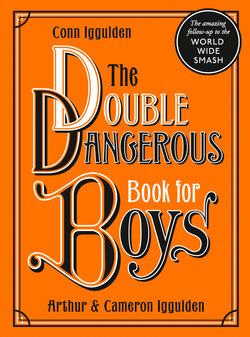Читать книгу The Double Dangerous Book for Boys - Conn Iggulden - Страница 16
ОглавлениеKINTSUGI
akg-images/Interfoto
Kintsugi is an ancient Japanese art form that means ‘golden joinery’. It is also called kintsukuroi – ‘golden repair’. Whether you ever try it or not, it is a fascinating thing. In essence, it’s repairing broken pottery, but not in order to hide the cracks. Instead, the cracks are filled with gold or silver dust and made as obvious as possible. The result is a spiderweb of bright colour across the original surface – as beautiful, or even more so, than the original.
The idea is that broken things can still be valuable, even wondrous. Perhaps there is a lesson in kintsugi about scars and how we see ourselves. It is not difficult to imagine a bowl or vase with special value – the gift of a loved one, for example. Allowed to drop, it would break into pieces and seem impossible to fix. Yet perhaps, a dozen quiet evenings later, something beautiful might emerge.
There are pieces of ceramic that are masterworks in themselves, of course. For such a fragile material, it’s amazing they survive for the centuries they do. You might see iron bands worked into one of those to hold an old break together. This is not that practical solution – kintsugi is an art form in itself.
Now, obviously we can’t manage the expense of gold dust, silver or platinum. Ours was strictly a cheaper project. Our white vase came from Hobbycraft, as did the glitter and glue. Make sure you get a glue that can handle a ceramic break. The Japanese use resin or lacquer.
For the purposes of testing it for this chapter, we thumped the vase once with a club hammer and broke off a piece. If you have shattered a vase into forty different pieces, don’t despair. It will take a long time to complete a job that has to wait for glue to dry at each stage, so bear that in mind.
If we simply reglued the broken piece, even with glitter mixed into the glue, it would form a hairline and be almost invisible. The idea is for the break lines to be as obvious as possible. Take a steel file and remove the edges of the broken piece and the rest of the jug. Try not to break it or send anything flying across the room. The idea is to widen those cracks. You might try refitting the piece every now and then to check your progress.
When you’re ready, mix up a batch of glue and glitter. PVA glues will dry clear, leaving the glitter visible. However, our best result came from a premixed glitter paste. Slather the stuff on liberally and replace the broken piece. Of course, as you’ve filed away the edges, you might find it doesn’t stay in place any longer. Having a roll of masking tape around is extremely useful.
Wipe as much of the glitter-glue away as you can while it’s still wet – it’s trickier to remove when it’s dry, especially if the piece of pottery isn’t glazed. Try not to get too much of the glitter on you as well. This is a fairly messy process, but the results can be rather lovely. The most valuable thing you will ever own is your time. Using some of it to make a thing of beauty cannot be a bad thing – and reminding yourself that broken things can be fixed is always worthwhile.
